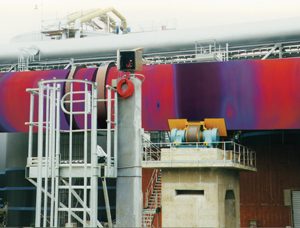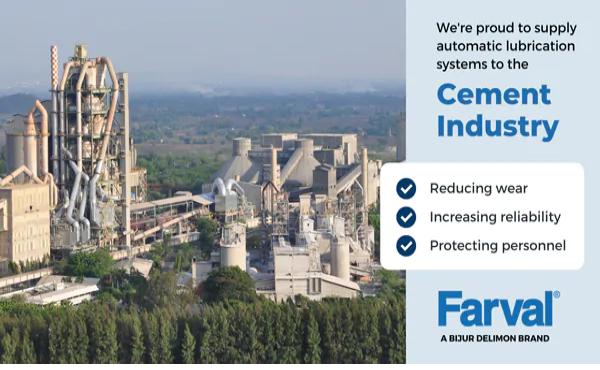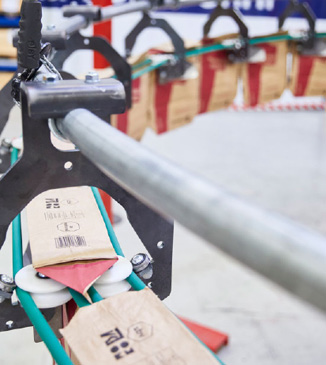
Raytek, a leading worldwide provider of infrared (IR) thermometry, has extended the capabilities of its CS210 process imaging system for cement kilns with optional, fully integrated 3D View and Refractory Management Database modules. This enhanced kiln shell scanning system enables cement manufacturers to avoid costly damage and unscheduled downtime by continuously monitoring rotary kilns to detect hot spots due to refractory loss, damage and wear.
Using the CS210 infrared (IR) linescanning solution, which now supports up to four scanners, cement plant operators can determine the effectiveness of kiln refractory material. Fallen bricks will be quickly detected and appropriate action may be taken to prevent further damage. Scheduled maintenance can also be planned to replace the refractory with a minimum of downtime. Thus, the refractory life can be extended to provide economic benefits and avert emergencies.
The 3D View Module helps users to easily understand all the data from the kiln and its environment, including the live view of the rotating kiln, life rings and zone (with optional hardware) as well as the non-refractory related “real-time view,” which is part of the standard CS system. Users can use the Refractory Management Module to determine when to change the refractory of a cement kiln. Its database is based on an enhanced data management system that can monitor the installed brick, including gathering, storing and analyzing all necessary data to indicate refractory wear during use. The system software features an easy user interface for entering standard data with predefined drop down lists, as well as history tracking that includes all related refractory and kiln data, maintenance data, date, time and record of changes made by user name.
With the CS210, temperature is monitored along the entire length of the kiln shell with “one brick” resolution. The system provides fail-safe hot spot alarm outputs. Operators can also detect abnormal conditions, such as faulty flame position and shape. Temperature data for areas “shadowed” from the main sensor are provided by individual point sensors and seamlessly integrated into a complete, real-time thermal image.
At the core of the CS210 system is a specially built MP150 HR linescanner with 1024 data points per scan line, and an integral heater, configured for the user’s kiln applications. Featuring state-of-the-art optics, advanced microprocessor electronics and a high-reliability motor, the MP150 combines signal processing, data storage and data communications into one integral unit. To ensure reliable operation in even the harshest kiln environments, the linescanner is designed with a rugged cast aluminum housing, which, in turn, is mounted in a stainless steel protective housing with provisions for air-purge and water-cooling.
Installation of the CS210 process imaging system has been simplified with the addition of a single fiber-optic communication channel to carry all system data from the scanning system located at the kiln to the host computer imaging system in the control room.
With DataTemp software accessories, the CS210 system expands to become a comprehensive kiln-monitoring tool. For example, optional burning zone sensor and Live Ring Migration (LRM) tire slip monitoring can be integrated into the system so that complete information is displayed on a single screen in the control room, and all data, events and alarms are stored and accessible in a common database. Fan control and shadow monitoring accessories are also available.
Raytek, www.raytek.com




